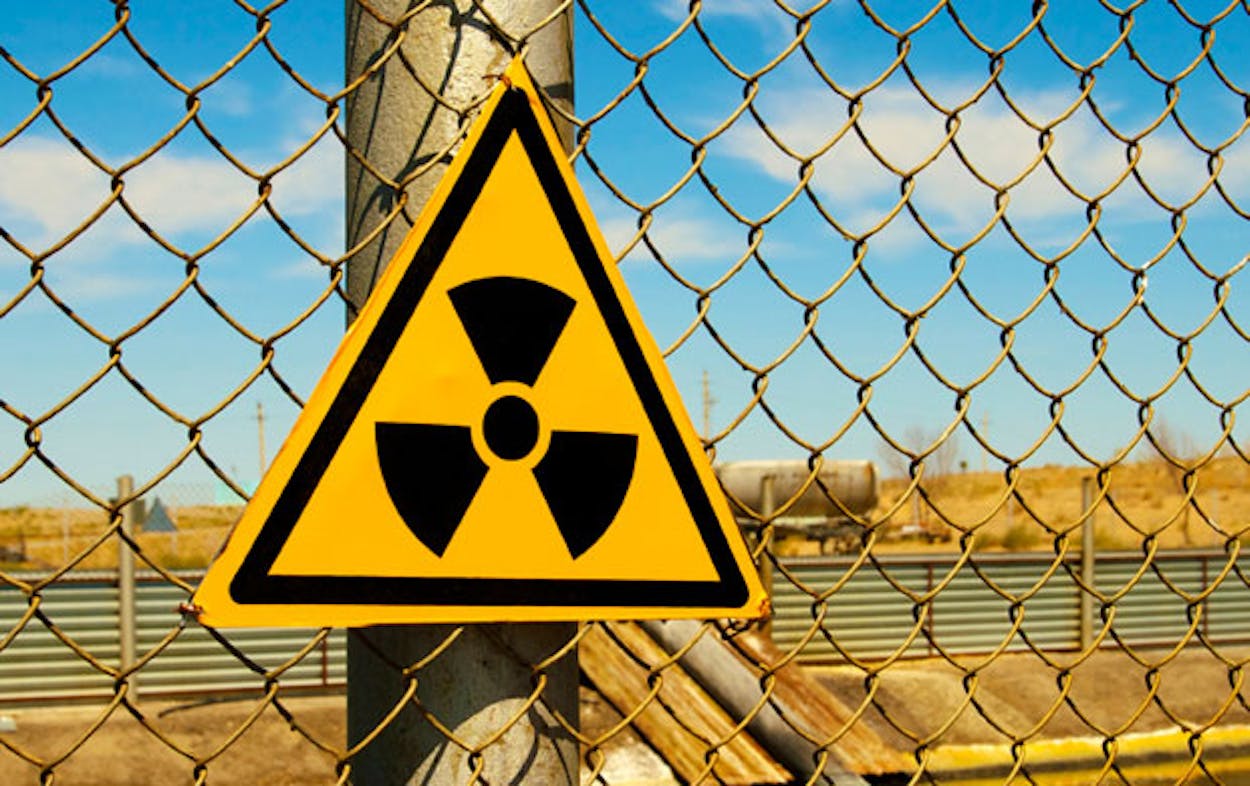The opening of a 15,000-acre dump for low-level radioactive material in Andrews County is taking the pressure off of a Utah site that had been accepting the bulk of the country’s radioactive waste.
Salt Lake Tribune reporter Judy Fahys trekked out to the new dump—owned by Dallas billionaire Harold Simmons of Waste Control Specialists—and offered this description:
All you can see from the bottom of the massive pit is sky—big, blue desert sky. Concrete and plastic sheets blanket its squared sides, and a gravel road slopes up one wall to the red clay rim.
Though its shape is strangely precise, most people call this a dump. And someday the army of trucks that now scurries around its perimeter will fill it neatly with containers of radioactive waste from around the country.
What happens to the waste once it gets there? Well, it’s placed “a network of specialized cells—massive bowls carved 100 feet deep into the vast, flat West Texas desert. Dug out of hard-packed red clay, the disposal pits are swathed in steel-reinforced concrete and lined with heavy-duty plastic,” Fahys writes.
Fahys, in her sprawling piece, notes that, prior to the opening of Waste Control Specialists’ site, just three others existed in the country:
Two—one in Washington state and one in South Carolina—are strictly limited to taking waste from just 14 states. That leaves EnergySolutions’ mile-square site in Clive, Tooele County, to serve the bulk of the nation’s disposal needs. And it has. Nearly 97 percent of all radwaste shipped to commercial disposal in the past 20 years has wound up at the EnergySolutions site 80 miles west of Salt Lake City, according to the U.S. Energy Department. Roughly three dozen states had no practical alternatives for the radioactive discards from hospitals, universities, government cleanups and industrial plants, including everything but the fuel rods from nuclear reactors.
The Texas dump is good news for waste producers–hospitals, powerplants, etc–who have been sitting on radioactive materials for years. But it benefits Utah, where politicians have been reluctant to expand the types of waste that the EnergySolutions site accepts, most of all.
Texas’s site cost $500 million to build and accepts waste from 38 states. Unlike EnergySolutions’ dump in Utah, the Texas site can accept a “full range of low-level radioactive waste—classes A, B and C.” (The Utah site can only accept type A, but has been under pressure for years to expand what it takes.) So, in other words, “Utah is no longer the sole focus of the waste universe,” Leonard Slosky, who runs a Denver-based waste management group, told Fahys.
What’s already been buried in the Andrews County dump? Here’s a taste: “Some 3,776 canisters of highly concentrated weapons-making waste from Fernald, Ohio, were headed to Utah in 2003 despite their high-hazard level until then-Gov. Olene Walker objected, halting the move. The waste is buried now in a special section of the Texas site.”
And what’s coming in the future? According to Fahys, B and C-level waste from a decommissioned power plant in Illinois.
And Simmons’s dump is likely to retain its niche for years to come:
The industry landscape isn’t likely to change much in the future, given what it took for WCS to get its license. Even though Congress set up a system to build new sites during the Reagan administration, the Texas company is the only one to survive running the political and financial gantlet while opposition killed off other proposed sites in Texas, Nebraska and California. It took 15 years and $500 million.
“Because it was a very time-consuming, expensive effort,” said [Rodney] Baltzer, the WCS president, “I don’t think it will ever be done again.”







